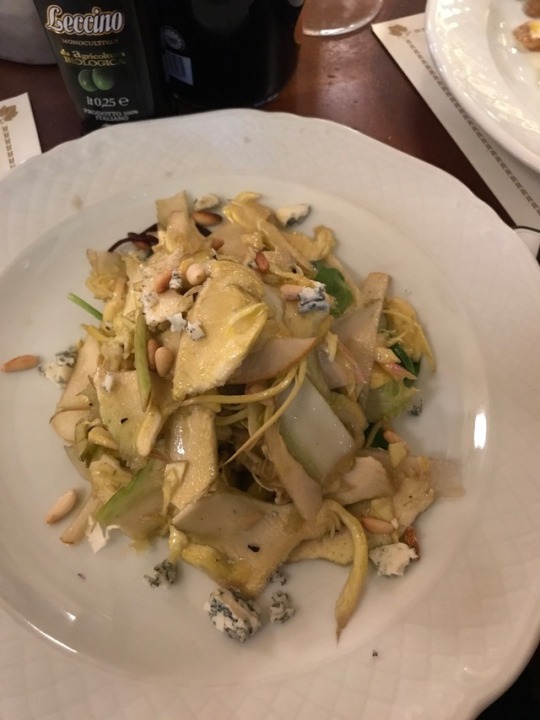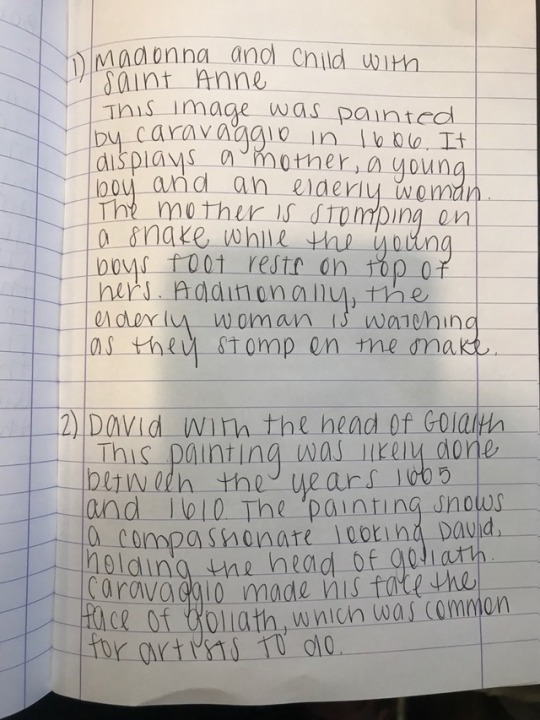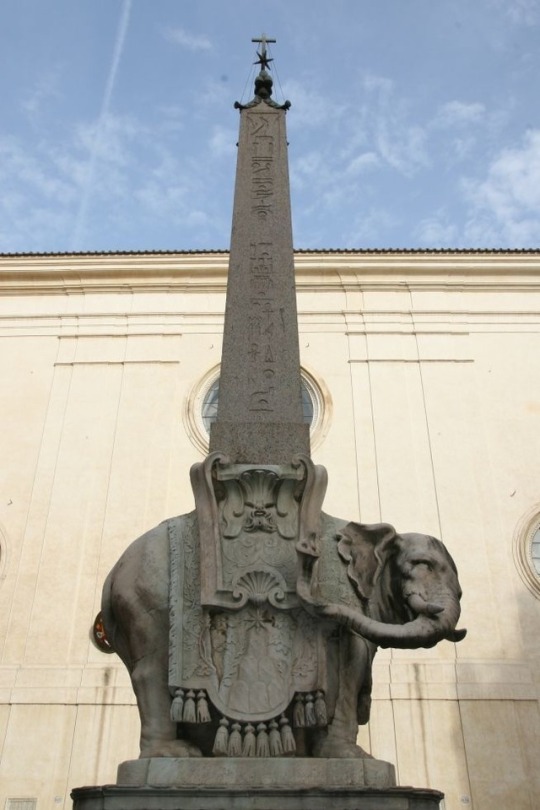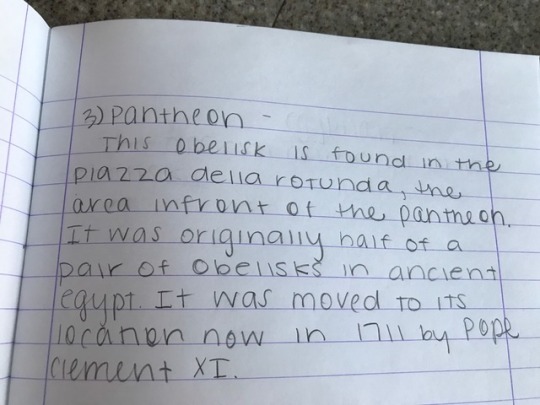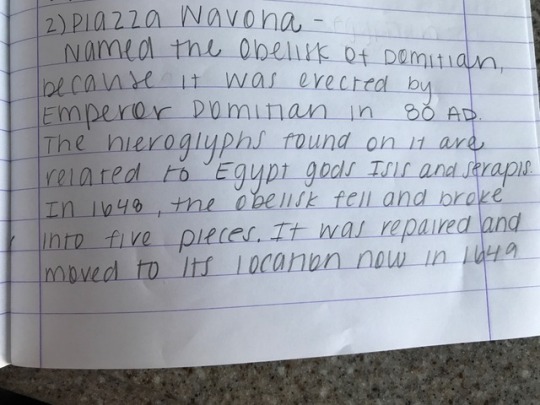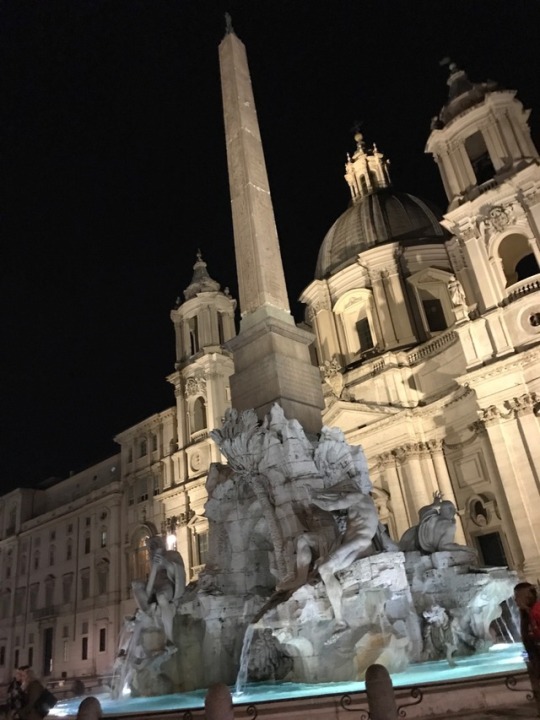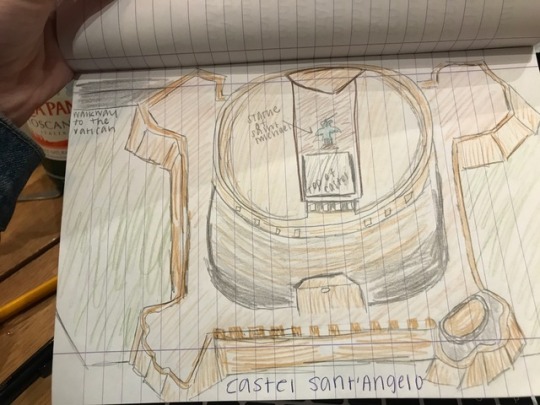Text
Anna Bowser
Monumental Politics of Greece and Rome
Char Miller
1/18/2018
Confederate Monuments
In recent years there has been an increase in the removal or relocation of confederate statues across the United States. Many of these confederate monuments were dedicated in time periods of racial conflict when African Americans were being intimidated by white supremacists. These statues commemorate a wide range of individuals who were involved on the confederate side of the civil war. Their removal comes at a time when our country is in upheaval over an ongoing race issue. This issue has become integral to our nation, causing a lot fighting and even deaths. Although I believe it is important to remove these controversial statues, their removal tends to bring up overwhelming unpleasant feelings for some people which can lead to more social unrest.
Throughout our trip we were able to see the monuments in both Greece and Italy and discuss their history and importance. We interviewed citizens of both Greece and Italy who gave us a better insight to these monuments and the impact they have on their culture. Upon return to the United States, I was able to interview two individuals about the recent removal of the confederate statues. The first person I interviewed, Caleb, is a current senior in the government program at Mason.
Caleb believed that the monuments were erected by different levels of state, local and federal governments. He said that they were erected both cheaply and quickly during the first half of the twentieth century. Caleb also said, “yes and no” when asked if he supports the removal of these statues. If the person the statue is commemorating wanted to preserve slavery then he believes it should be removed, however on the contrary, many important people in American history had slaves. An example of this would-be Thomas Jefferson. Although Jefferson had slaves, he is still an important individual in our history and we commemorate his accomplishments for our country. When asked Why he thought the monuments were made and put into place he said they were made by people who were confederate sympathizers, or people who wanted to preserve the confederacy. Caleb also gave an interesting insight about the removal of a structure right here in Fairfax city. In September 1861, Fairfax became the birthplace of the twelve-star confederate flag. A historic marker was placed near the intersection of Oak and Main streets, in 2008 to commemorate its discovery. However, since then the marker has been removed and replaced by a new apartment building. It is unclear as to where the marker is now, if it was moved or just taken down.
The second individual I interviewed upon my return to the United States was my Dad. When asked who he thought put them there he did not know exactly, but that they were erected to honor soldiers who fought in the civil war. He believes that it is important to honor those soldiers. They fought and gave their lives up to fight, they had families who lost them while they were just fighting for what they believed was right at the time. My dad also believes that we should not remove the statues, as he believes it causes more social unrest. In a typical Dad fashion, he answered by questions with questions of his own. He said, “Where would be if the south would have won the war? Would our nation still be in slavery?”. He believes that right, wrong or indifferent the memorials and those individuals commemorated are still a part of our history. Removing the statues does not erase the history or our past as country. He also said that every country has history marked with politically incorrect moments and mistakes, but they are still a part of that countries’ history. The removal of those statues will not change that history or those mistakes.
Through the knowledge I gained while studying abroad and after hearing the opinions of these two individuals I realized I feel somewhere in between their beliefs. I understand why some feel as though these memorials should be removed. Those who feel oppressed by these statues and their memories would of course want them removed, and I can understand why that would be the case. However, I also see that these monuments are a part of our history as a country. Furthermore, I do believe that their removal can sometimes cause unnecessary social unrest. I believe that to some extent if these monuments are left alone, they will be looked over. As a country, I see bigger issues we have to deal with, such as our national debt or the opioid crisis. The removal of these statues will not change our past, however if we work together we can have a more positive future. The monuments remind us where we came from and to never go back.
0 notes
Text
Anna Bowser
14 January 2018
Monumental Politics of Greece and Rome
Char Miller
Victorio Emanuele II Monumento Interview
The Victorio Emanuele II monument, also known as the Altare Delle Patria, is a large monument found in Rome to honor Victor Emmanuel, the first king of the unified Italy. In English, Altare Delle Patria translates to Altar of the Fatherland. Additionally, the monument holds the tomb of the unknown soldier. While in Italy I was able to interview Amata Marino, a waitress at a local café, about the Victorio Emanuele II monument.
Amata was happy to answer the questions I had about the monument and Rome in general. Amata is twenty-three years old and grew up in Rome, she is working at the café currently while finishing school. When asked Amata said she likes the monument, but that not all Roman citizens felt the same way. The monument is very large, in fact it is the largest in Rome, and when it was built it took away a large portion of Capitoline Hill. Also, the destruction of ruins and churches happened in the building process. These losses of the Hill and historic sites are displeasing to some Roman citizens. Additionally, some Romans believe the structure to be too big and obnoxious for their city. Unlike other recognizable monuments and buildings in the city, it does not have a circle dome on top. Instead the structure is squarer and boxy in fashion. Amata also discussed how the structure is made out of a whiter marble than what was traditionally used in the city, which adds to the obnoxious factor that many Romans dislike. The Roman citizens have given the angular structure some unappealing nicknames, such as “wedding cake” or “typewriter”.
When asked, Amata did not know exactly when the monument was built, only that it was built in the early nineteen hundreds. Further research shows that her time frame was correct. The monument was designed in 1885 by Guiseppe Sacconi, but was not completed until 1925. Amata also said she does not feel that the monument needs to be replaced. She discussed the unwanted environmental and economic costs that would come from tearing down and replacing the monument.
As mentioned, the monument is very large and can be seen from far away. It consists of an elaborate staircase leading up to statue of Victor Emmanuel. The statue depicts the “Father of the Nation” riding a horse. It was sculpted by artist Enrico Chiarada and sits on a pedestal decorated with relief work of Italian cities. Below the sculpture is the tomb of the unknown soldier. The tomb is housed under the statue of the goddess Roma, who holds an eternal flame. The unknown soldier’s remains were placed in 1921 and are guarded by Italian military officers day and night. To the right and the left of the main structure are two fountains that Amata mentioned are supposed to represent the peninsula that is Italy. The top of the monument is massive and decorated with tall columns. The frieze on top displays statues that symbolize the different regions of Italy.
As an education major, the questions I chose to ask Amata related to her education as a young child in Rome. I asked if the Victorio Emanuele II monument is something that is often visted on field trips for the students in Rome, and she said it was for her and continues to be today. Living in a city with such rich history makes it easy to teach children about the beginnings of their city.
As a whole, Amata said she appreciates not only the Victorio Emanuele II monument, but all of the monuments and historic places in Rome. Amata has lived in Rome her entire life, therefore I asked if she believed it was easy to become unappreciative of the historic sites the Roman citizen pass on a daily basis. She said that yes it could be easy to become unimpressed with the historic sites her city holds, but she personally makes an active effort to not do this. Amata said she is Catholic so she enjoys going to Mass held by the Pope at least one Wednesday a month. She said this keeps her aware and appreciative of her surroundings.
0 notes
Text
Anna Bowser
9 January 2018
Monumental Politics
Char Miller
Importance of Greek monuments
The monuments found in Athens, Greece contain a rich history of the ancient Greek culture. The monuments found here are some of the oldest, dating back to many centuries B.C. This rich and long history of ancient Greek culture found in these ruins is the precise reason why people travel around the world to see these monuments. The most well-known monument found in Athens, is the Acropolis. The Acropolis is a large hill in the middle of the city, which translates to “highest point” and “city”. In addition to the Parthenon, it is also home to other ancient sites such as the temple of Athena Nike and the theater of Dionysus. To learn more about the importance of these monuments, I interviewed Dr. Vassiliki Chyssanthopoulou, the professor who presented the lecture on the connection between folklore and modern Greek culture. Dr. Vassiliki was the perfect person to interview because she is highly educated on the relationship between ancient and modern Greek culture. Additionally, we were prompted to ask a few our own questions. As an education major, I chose to ask Dr. Vassiliki about how children in Greece are taught about these incredible monuments.
Dr. Vassiliki Chyssanthopouloua is a professor at the University of Athens. Her focus is on folklore, and as we saw in the lecture, how folklore relates to the modern Greek culture. Dr. Vassiliki described a bit about her adolescent years growing up in Greece. She explained about the Dictatorship that began in 1964 and how it affected the different use of formal and informal language she had to use.
According to Dr. Vassiliki the important remaining monuments on the Acropolis were built in the 5th century B.C. The construction was coordinated by Pericles but actually built by architect’s Iktino’s and Kallikrates. The most notable, the Parthenon was built as a temple for the goddess Athena. Athena is the namesake of the city of Athens, so it makes sense that a temple would be built to honor her. In addition to the Parthenon, another important monument found on top of the Acropolis is the Temple of Athena Nike, it was the first temple built at the site. A third important monument is found at the foot of the acropolis, the Theater of Dionysus. It was built as a dedication to Dionysus, the God of Plays and Wine. The theater could hold up to seventeen thousand citizens at once so it was the location of the largest ancient Greek festival, Dionysia.
In addition to historical questions about the monuments, Dr. Vissaliki also revealed her favorite hidden gem of Greece. Her favorite area is the Archeoligcal site of Brauron. It is located a little outside of city, close to the sea on the eastern side of the peninsula. The first known temple found here dates back to the 6th century B.C. The site was dedicated to the Greek goddess Artemis, the sister of Apollo. It was at this sanctuary of Artemis that young adolescent girls would parade to when they were approaching the age of marriage. They would there perform sacred acts and sacrifices to Artemis to prepare for marriage.
In recent decades Greece has experienced an unfortunately bad economy over the past decade. With that being said, one of their most influential industries that contributes to their economy is tourism. People travel from far and wide to experience the history this city has to offer. When asked, Dr. Vissailiki stated that in her opinion this austerity political system has negatively affected the preservation of the monuments. In an economy with little money the government does not have as much funding to put towards preservation of monuments as it would like.
Due to the positive effect tourism has on Greece’s economy, Dr. Vassiliki explained that the locals are for the most part receptive and welcoming to foreigners. Every experience I’ve had here reflected her words. The locals have been nothing but nice. Every person I’ve met has been both kind and helpful beyond my expectations. After lunch one day, our waiter insisted on showing us pictures of his kids and hugging every one of us, and it was incredibly sweet. Although the citizens are very thankful for the tourism, they still work to preserve some of their ancient city from the industry. For example, most of the big monuments have rules in place against having parades or other tourist like festivals on their grounds. This is done to ensure the sacredness of these ancient and incredibly constructed sites stays intact. Additionally, Dr. Vassiliki explained that the locals are also very accepting of immigrants and refugees. Although the suffering economy makes it hard for the government to intervene on these occasions, the citizens take it upon themselves to welcome others into their culture as their means will allow it.
Another question I was able to ask Dr. Vassiliki was about the nature of Greek children learning about the monuments in their culture. As an elementary education major, I was especially interested in this topic. She explained that they begin to learn about the ancient history of this monuments and a young age. They are always encouraged to do projects on the monuments to deeper their understanding of the ancient citizens that lived in their city. In the United States, learning about our monuments fosters a sense of nationalism in students from a young age, and this is the same with Greek students. They students learn about it while they are young so they grow up to be citizens who appreciate the rich ancient culture.
Prior to our trip to Athens I knew very little about the ancient Greek ruins found in this beautiful city. I had learned about ancient cultures growing up, but at the time I would’ve never assumed I would one day be visiting these historical sites. The monuments are so incredibly important to not only the history of Greece, but also the history of our world as a whole. The knowledge I’ve gained from interviewing Dr. Vassiliki was the perfect finishing touch to this trip. I find it incredible that I stood at monuments that have been around for centuries B.C., and I am just one small blip in that long timeline of history. My hope is that the monuments will continue to be preserved so meticulously, so that thousands of years from now someone can think the same thing.
0 notes



